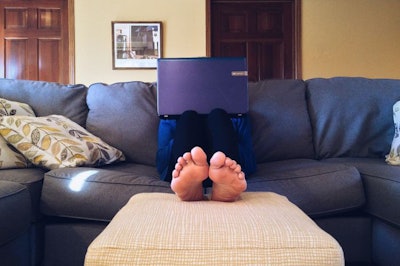
The current coronavirus (COVID-19) pandemic has turned “business as usual” on its head. Social distancing is now all but a mandate, entertainment-related businesses are closing, and more and more people are abruptly discovering what it’s like to work from home.
2 tips boost pet food industry remote work productivity
Finding personal productivity hot spots and learning to use tech effectively can help pet food industry professionals adapt to remote work.
At WATT Global Media (parent company of Petfood Industry), we work under a ROWE (Results-Only Work Environment; a human resource management strategy developed by the founders of CultureRx) system that, among other things, allows us to work any time, anywhere, setting our own hours and our own workspace as long as our business goals are met. As a result, the vast majority of us have been telecommuting for quite a number of years, putting us in the position of being able to share our insights now.
In Part 1 of this two-part series, we cover how to adjust your workflow and productivity expectations for maximum success. In this, Part 2, we’re going to cover the unique challenges of work-life balance when your office and your home are the same place.
-
Take care of yourself physically
There are now options within your reach that you might not have at work: a kitchen full of your foods and your coffee, for example. It’s easy to become a grazer when you work from home, and that’s not necessarily a bad thing — but snack wisely. Keep a glass of water on your desk and mind your coffee or tea intake, particularly if caffeine is your co-pilot.
All those tips about getting up from your desk and walking around to keep the blood flowing and prevent the aches and pains that come with sitting at a desk all day, every day? They still apply when you’re working from home, and guess what — you now have access to your neighborhood, your back yard, your balcony, your patio; whatever connection you have to the great outdoors, make use of it. Set an alarm to remind you to take breaks and head outside for some fresh air.
It’s not just that clearing your head is good for productivity; these are stressful times and getting out of your house while being socially responsible is going to be key to avoiding cabin fever. You’re not hurting anyone by being in your yard or going for a walk around the block (as long as you stay the recommended distance away from anyone else who might be doing the same).
It’s hard to tell just how long all of this will last, but if you feel like investing for the potential long haul, stationary bike and treadmill desks allow you to work and work out at the same time. Different desks provide ideal workspaces for different tasks, so do your (online) research to find one that suits what you do most. For example, some find that recumbent bike desks can provide a smoother platform for typing compared to treadmills and tend to be more comfortable for longer stretches of work than upright bikes. Others find electric treadmill desks help them to keep walking while working, whereas stationary bikes require you to set the pace.
-
Get your schedule situated with others at home
Now is the perfect time to practice setting some boundaries. It can be easy to get distracted with other family members or housemates around all day, each of you trying to adjust to your new normal. But there are some simple ways to make sure everyone gets what they need.
First, set clear definitions as to where work space and time begins and ends. Do you have a home office you’ll be using? Close (and lock, if necessary) the door to head off interruptions. Are you commandeering your kitchen table? Set a perimeter and make sure everyone knows to steer clear. Use headphones to drown out noise and face away from the main living space if it will be a visual distraction. Do you have a window you can set up by so you’re not staring at a wall? Do whatever you need to do to make sure you aren’t distracted when you need to focus. If you have a meeting or otherwise absolutely cannot be disturbed, put up a sign or share your schedule so everyone around you is on the same page.
When you take a break, use some of that time to interact with your family/housemates/pets. Eat meals together. It’s important to spend time with the people you can be around, because everyone’s world just got a lot smaller.
-
Special tips for dealing with children at home
If you have kids, odds are pretty good they’re at home now, and will be for the foreseeable future. Whether due to daycares closing down or schools shutting their doors, your children are now for all intents and purposes hanging out in your office space, and you’re going to be disrupted — be prepared.
If you have a partner at home with you, have a family meeting ASAP to figure out how to divide your time and conquer your household. Compare work schedules. Be ready to compromise. Be flexible. Parents are already pros at tag-teaming; you’ve been training for just this sort of situation. Now is your time to shine.
Do you still have nap-takers? Nap time is your friend. You will be surprised at how much work you can get done when you know you have exactly one hour and forty-two minutes to complete four hours of tasks.
If you don’t have a no-screen policy for your kids, there are plenty of streaming services ready and willing to entertain them while you get your inbox under control. If they’re school age and doing online schooling right now, set up and work next to them. Let them know you’re all in this together. If they’re not quite school age or are but without a defined learning plan, there are many, many academic facilities, zoos, museums, concert halls, etc. offering free online learning resources for education and entertainment.
Do you have a laptop and a back yard? Move everyone outside and let kids do what kids do best while you keep watch and get some work done.
Briefly: Stave off feelings of isolation … with your pet!
In a recent survey conducted by the Consortium on Social Isolation and Companion Animals:
- 80% of pet owners say their pet makes them feel less lonely.
- 85% of all respondents believe that interaction with companion animals can help combat loneliness.
- 76% of all respondents agree that interacting with animals can alleviate social isolation.
Contact Me
View our continuing coverage of the coronavirus/COVID-19 pandemic.

















